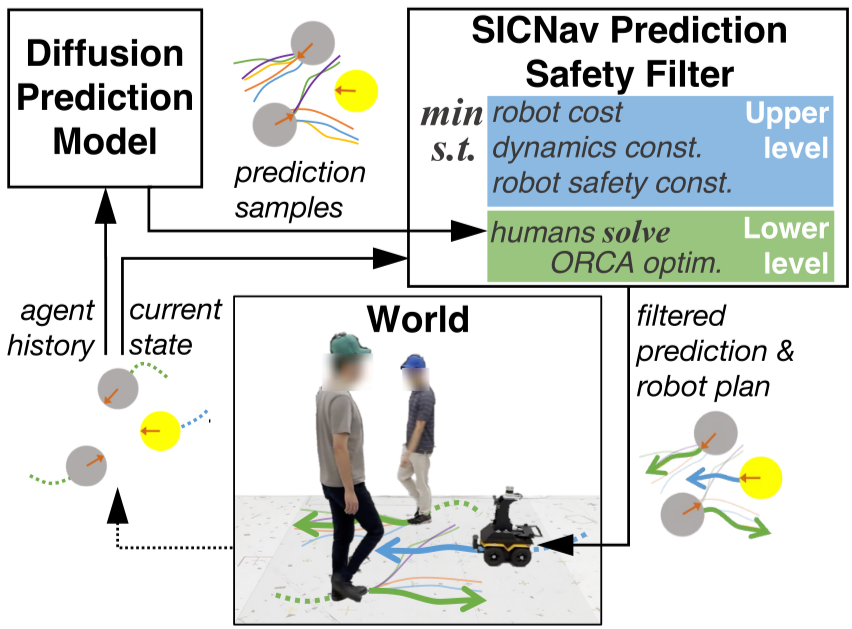SICNav-Diffusion: Safe and Interactive Crowd Navigation with Diffusion Trajectory Predictions
Accepted to the IEEE Robotics and Automation Letters (RA-L)


Video
Abstract
To navigate crowds without collisions, robots must interact with humans by forecasting their future motion and reacting accordingly. While learning-based prediction models have shown success in generating likely human trajectory predictions, integrating these stochastic models into a robot controller presents several challenges. The controller needs to account for interactive coupling between planned robot motion and human predictions while ensuring both predictions and robot actions are safe (i.e. collision-free). To address these challenges, we present a receding horizon crowd navigation method for single-robot multi-human environments. We first propose a diffusion model to generate joint trajectory predictions for all humans in the scene. We then incorporate these multi-modal predictions into a SICNav Bilevel MPC problem that simultaneously solves for a robot plan (upper-level) and acts as a safety filter to refine the predictions for non-collision (lower-level). Combining planning and prediction refinement into one bilevel problem ensures that the robot plan and human predictions are coupled. We validate the open-loop trajectory prediction performance of our diffusion model on the commonly used ETH/UCY benchmark and evaluate the closed-loop performance of our robot navigation method in simulation and extensive real-robot experiments demonstrating safe, efficient, and reactive robot motion.
BibTex
@article{samavi2025sicnavdiffusion,
author={Sepehr Samavi and Anthony Lem and Fumiaki Sato and Sirui Chen and Qiao Gu and Keijiro Yano and Angela P. Schoellig and Florian Shkurti},
journal={IEEE Robotics and Automation Letters (in press)},
title={SICNav-Diffusion: Safe and Interactive Crowd Navigation with Diffusion Trajectory Predictions},
year={2025},
volume={},
number={},
pages={},
url={https://arxiv.org/abs/2503.08858}
}